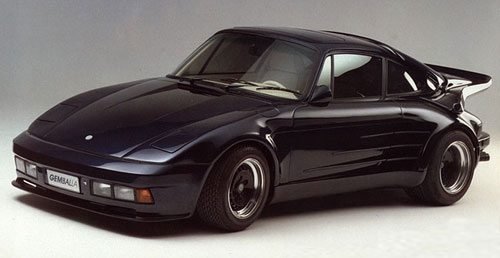2012 Champion Porsche 911 Turbo RSR:
The Antihero

Funny thing about the Porsche 911—whether on the street or on the track, it always seems like the “good guy.” Yes, its mechanical configuration is unorthodox, and its owners snooty from time to time, but competing against a reckless Ferrari or headstrong BMW, the 911 is always (if you’ll pardon the non-Teutonic analogy) the Captain America of the bunch—the forthright, unflappable do-gooder in a crowd of capable misfits.
Until this 911.
Car and Driver‘s July 2012 feature story on the 2012 Champion Motorsport 911 Turbo RSR, internally known as the CMSP-38, bills the car as “the coolest 911 ever.” I’d choose a different adjective: Evil.
The price certainly is. Prepare to shell out near-as-makes-no-difference $400K for the privilege of parking one in your garage, on top of which get ready to fork over additional suitcases of Benjamins as track days—the CMSP-38’s natural habitat—consume tires and pricey specialty Porsche bits.
Which isn’t to say the car can’t be driven on the street—it can, and quite pleasantly, but as the C&D article makes clear, the objective performance numbers—640 hp, 0-60 in 2.7—while properly stratospheric, aren’t distinct enough from the plebeian 911 Turbo S’s to warrant the additional cash for bragging rights alone. No, the intent behind Champion Motorsport’s wide body, aero and track-centric modifications is to make those kinds of numbers much more usable. It’s one thing if you’ve got Roger Federer’s “liquid whip” forehand; it’s phenomenal if you can hit that forehand from anywhere on the court. Giving the performance numbers that kind of mobility is what Champion has achieved with the CMSP-38.
And then they decided to offer all that unheard-of performance bandwidth in a wrapper that looks like it would just as soon rip your face off as shake your hand. Behold the duality of the Champion 911 RSR: The German equivalent of the Batmobile; the heart of gold ensconced in a menacing shape; lethal force harnessed in the service of what’s right, in this case going very, very fast around a race track. Evil—controlled.



















